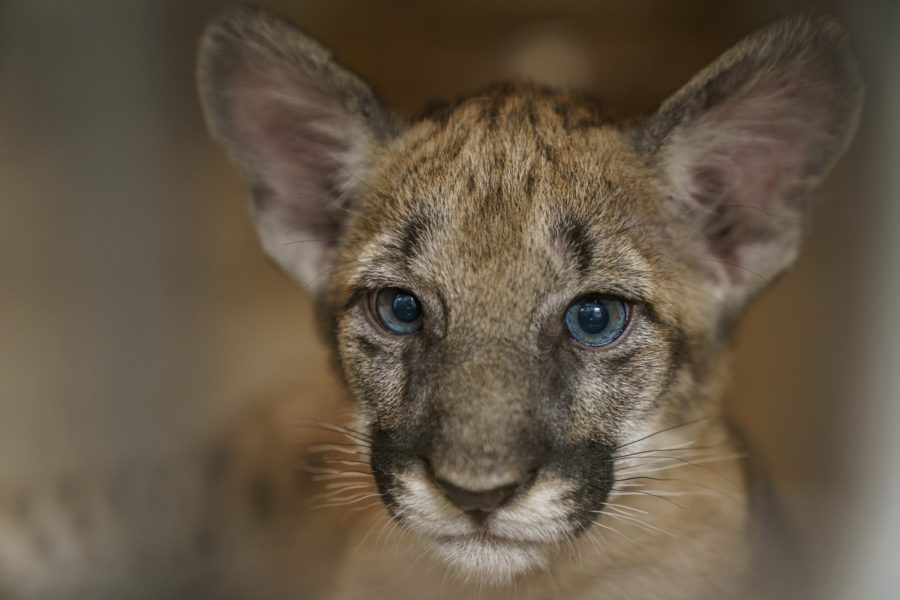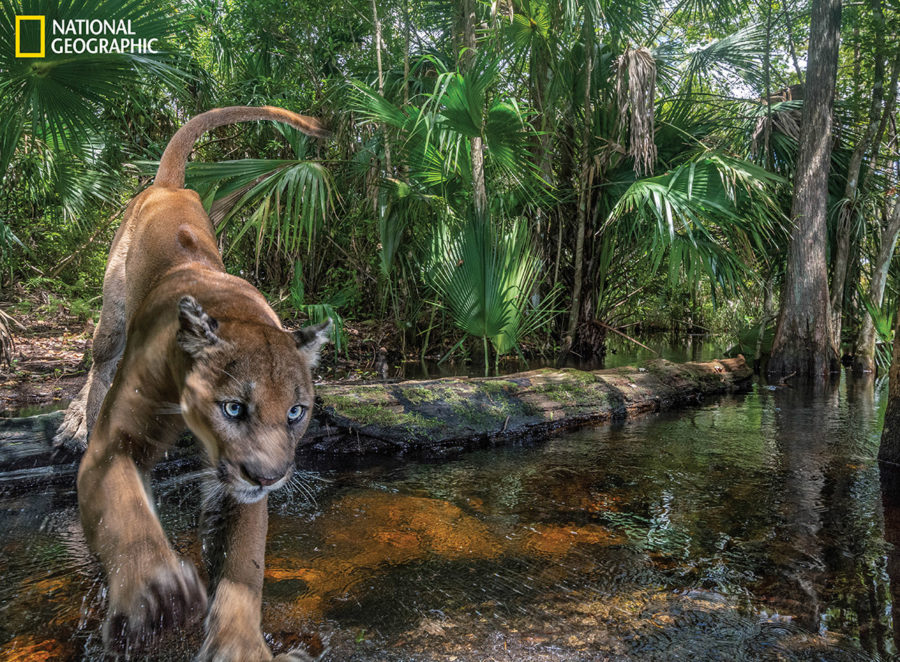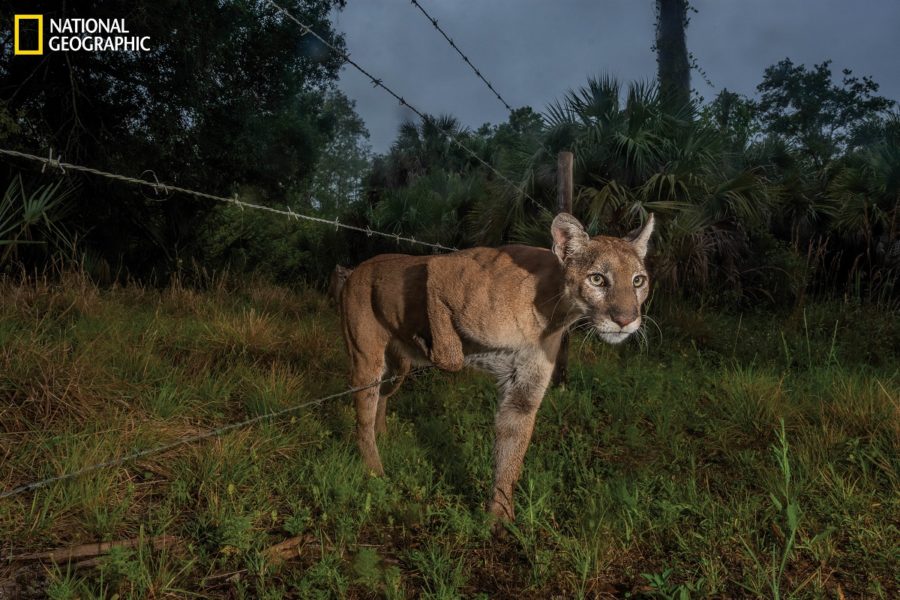“How America’s most endangered cat could help save Florida.”
The headline in National Geographic (NatGeo)’s latest feature on the rare and endangered Florida panther kindles an ambitious hope for the future of the big cats and the humans they’re forced to live with ‒ us, Floridians.
In the April 2021 NatGeo issue, the story unfolds through maps, timelines, words and photos. They follow the path of the panther across the state and through time.
It took veteran explorer and photographer Carlton Ward Jr. five years to capture the defining photographic body of work on these elusive, endangered animals. A proud eighth-generation Floridian, he knows that the panther’s future is necessarily intertwined with our own. He sat down with Keys Weekly to share what he learned.
“The lead image for the story, a panther jumping across a log around a flooded section of swamp, that picture took two years to capture,” he laughed.

Florida panthers are a subspecies of mountain lion — the only one remaining in the Eastern U.S. Also known as cougars or pumas, the big cats’ historic range once extended from Florida to Louisiana, along the Gulf and up to Arkansas. Now, wild Florida panthers can only be found in the tip of southwestern Florida.
Hunting and habitat loss decimated the once-healthy populations, and the species was among the first to be added to the U.S. endangered species list in 1973. At that time, fewer than 30 individuals remained, and many thought they were a lost cause, Ward said.
A massive, groundbreaking conservation effort involved the introduction of eight Texas mountain lions to breed with the native Florida population, which had become dangerously inbred. Five successfully did, injecting fresh genetic diversity into the population and saving them from the brink of extinction.
This effort catapulted the Florida panther to the main conservation stage, and the charismatic cat became the state animal in 1982 by overwhelming vote of students. So, does this success story have a happy ending?
Not yet, Ward cautioned.
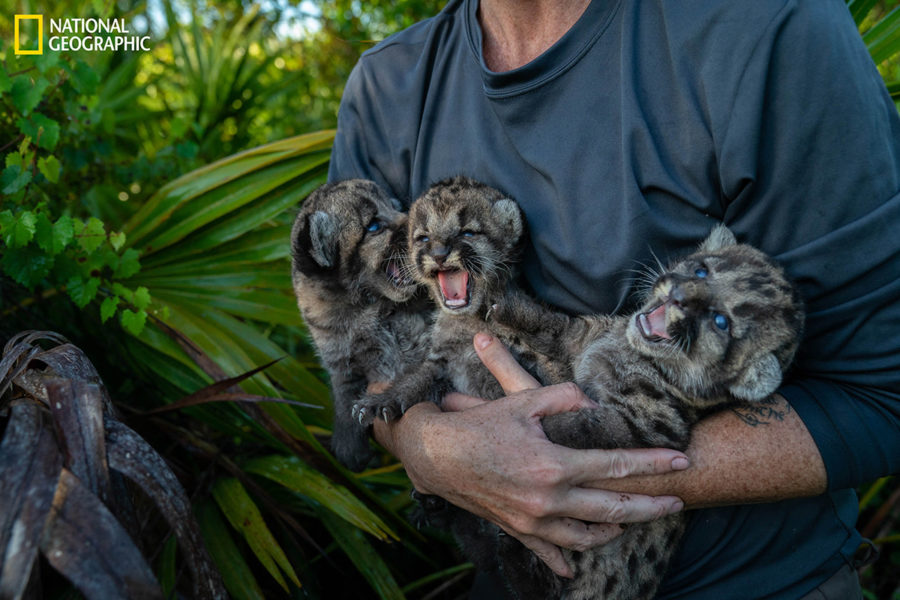
Today, there are roughly 200 individuals scattered in the wooded and swampy areas south of the Caloosahatchee River down to the Everglades. According to the U.S. Fish and Wildlife Service, in order to eat, mate and live, Florida panthers require large, contiguous lands to roam ‒ up to 200 square miles of territory per cat. This is particularly concerning given the current increases in development and continued loss of open ranches and lands.

Which brings us to this latest NatGeo feature. Throughout, the message is clear: save our wild and open spaces to save the Florida panthers; save the cats to save Florida, as we know it.
Ward’s image of a young female mother and her kitten at Babcock Ranch Preserve renewed hope that the cats are pushing north to extend their territory. This is a critical move if the species is to survive. The image proved that breeding females and kittens ‒ the future of the population ‒ were indeed moving beyond their current, limited lands. Ward told the Weekly, “The most important image is the picture on Babcock Ranch Preserve of a female panther with kittens. She’s significant because she’s the first female documented north of the Caloosahatchee, which has been the northern border of panther region.”
Ward added, “This sets up an awesome opportunity where the panther can go from a south Florida conservation challenge to a statewide conservation opportunity and hopefully inspire Floridians to save enough of these wild places for the panthers to reclaim their natural territories.”
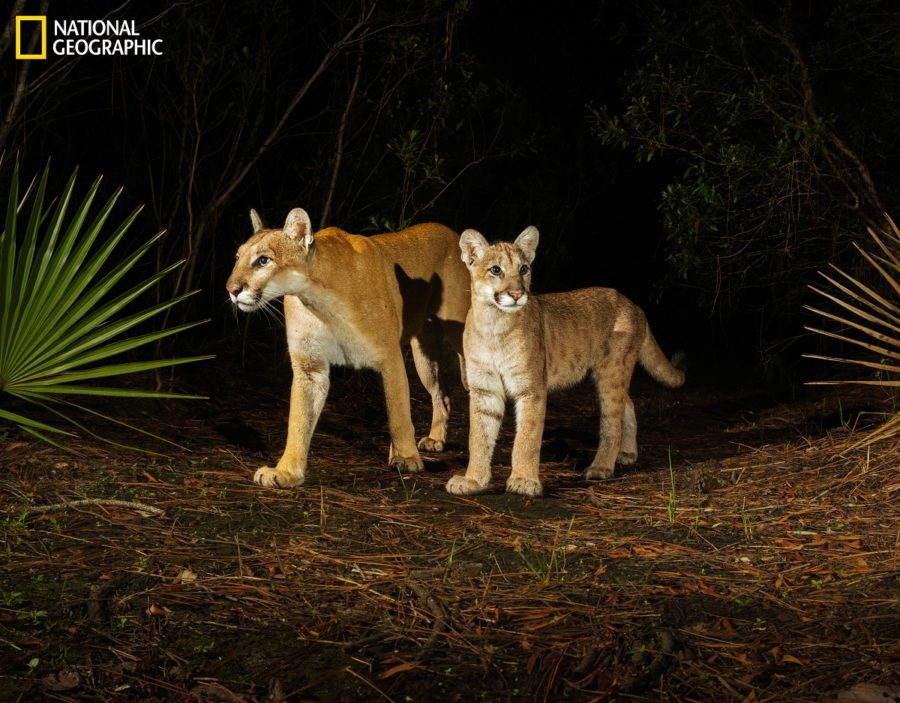
As more people move to Florida, continued development and new housing threaten the remaining panther habitat. According to NatGeo, loss of land increases cat-on-cat territorial spats and car collisions — the two leading causes of panther mortality. Roughly 25 cats are struck each year by vehicles, “a reflection of how development and road construction threaten the species at a time when roughly 900 people are moving to Florida every day,” the story says. Ward captured this tense border battle between humans and nature with images of a young male panther stepping through barbed wire and another, captured with infrared cameras, walking under a highway overpass at night.
On top of these threats, scientists are studying a neurological condition called feline leuk-myelopathy, which is affecting Florida’s panthers and bobcats. Animals suffering can have trouble walking, become paralyzed, starve and even die.
So, what can we do?
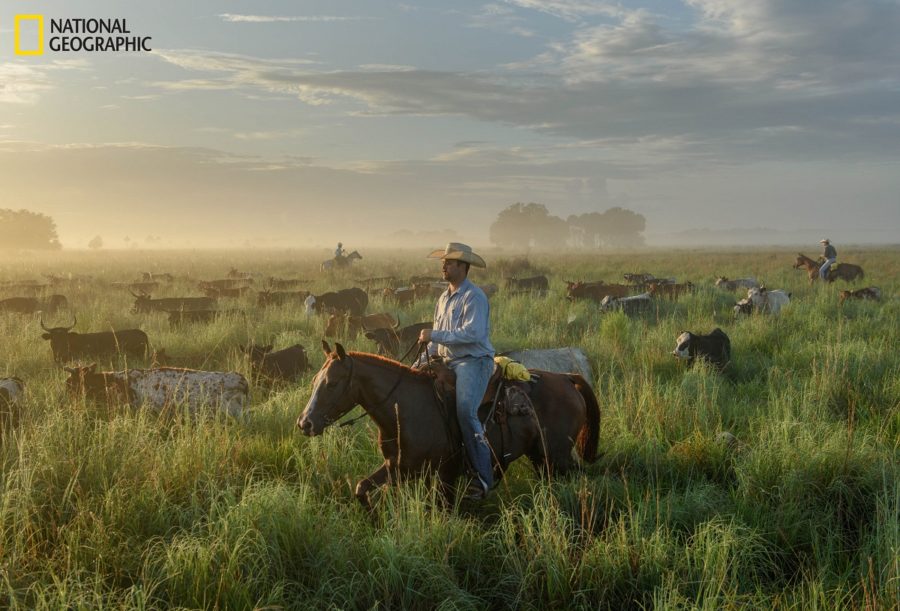
“To protect panthers, wildlife corridors ‒ including ranches, pastures, orchards, etc. ‒ need to be preserved, not turned into subdivisions/parking lots,” tweeted NatGeo reporter Douglas Main, who authored NatGeo’s feature piece. “This will help the bevy of animals that depend on the same lands, such as alligators, bears & more. And it will help humans too.”
Conservationists have created a patchwork of protected public and private lands throughout Florida’s interior called the Florida Wildlife Corridor. They hope this will encourage the panther to keep moving north.
Ranchers, a vanishing breed themselves, own much of this private land. Popularly pitted against the panther, Florida’s cowboys are actually, generally, in support of its conservation. Both share the “common enemy” of development, particularly new subdivisions. Every day, ranchers are offered big bucks for their land, without which they and panthers cease to exist.
“The land is still there,” Ward said. “We have a moment right now where we can choose to conserve it. There’s hundreds of landowners on the list that are open to conservation as an alternative to development. They’re waiting on conservation easements and to sell their land for national parks. We need to meet this opportunity.”
The photographer closed with his favorite thing about the animal he followed for thousands of miles through Florida’s swamps and backcountry: their perseverance.
“This animal exists against all odds,” he said. “We have one of the fastest growing, most populated states in the country. We have the watery landscape of the Everglades. And we still have the last large cat in the eastern United States ‒ right here. That’s their ability to scratch out an existence on the margins, on the edge of development and landscapes criss-crossed by roads.”
He added, “We can help them and ourselves. Florida has a chance to be a national leader here, if we choose to protect these places while they’re still here.”
















